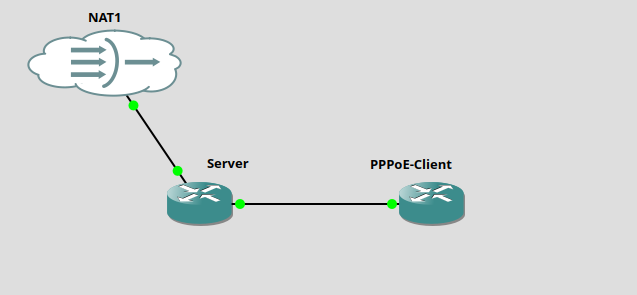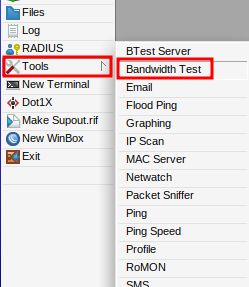What is a Bandwidth Test on MikroTik?
The Bandwidth Test on MikroTik is a built-in tool that allows you to measure the maximum data transfer capacity of a network interface. In simpler terms, it checks the actual upload and download speed of your connection, helping to identify bottlenecks, assess performance, and monitor bandwidth usage.
Why Perform a Bandwidth Test?
- Identify Bottlenecks: Discover where the bottlenecks in the network are, such as interfaces with limited capacity, incorrect configurations, or congestion.
- Verify Performance: Evaluate if the connection to the internet or between devices is working as expected.
- Monitor Bandwidth Usage: Track bandwidth consumption over time, identifying peak usage.
- Compare Different Configurations: Evaluate the impact of different network configurations on performance.
How to test bandwidth with Mikrotik ?
In this tutorial, we demonstrate a bandwidth test in a specific scenario, between a MikroTik Server and a PPPoE client connected via a PPPoE tunnel.

Bandwidth Test
Access MikroTik via Winbox.
Select the Tools menu.
Choose the Bandwidth Test option.

Fill in the fields:
- Test To – Enter the IP address for the test (e.g., 10.50.0.2).
- Protocol – Choose the TCP or UDP protocol.
- If you choose the UDP option, fill in the fields:
- Local UDP TX Size – Enter the size of the data packets sent by the local MikroTik interface.
- Remote UDP TX Size – Enter the size of the data packets received by the remote device, i.e., the destination of the bandwidth test.
- Direction – defines the direction of traffic that will be measured during the test.
- Both – measures both upload and download traffic simultaneously.
- Tx – measures only upload traffic, i.e., the speed at which data is sent from your device to another.
- Rx – measures only download traffic, i.e., the speed at which data is received from the other device to yours.
- Local TX Speed – defines the maximum speed at which MikroTik will attempt to send data during the test.
- Remote TX Speed – defines the maximum speed expected for the remote device to transmit data during the test.
- Random Data – this option uses random data, the test simulates real network traffic more accurately, providing more representative results.
- User – Username for the remote server, if authentication is required.
- Password – Password for the remote server, if authentication is required.
Click the Start button.

After configuring the fields in the MikroTik Bandwidth Test, you will have access to a detailed report that will provide crucial information about your connection’s performance. This information includes the average transfer rate (throughput), for both upload and download, the percentage of packets lost during the test. Based on this data, you can evaluate the quality of your connection, identify potential bottlenecks, and make more accurate decisions about configuring your network.

Mastering MikroTik’s bandwidth testing empowers you to troubleshoot network issues, fine-tune your network settings, and enhance the overall user experience. Regular testing is key to maintaining peak network performance and making informed decisions.
Did you not find the information you were looking for? Do you have other questions? Do you want to help us improve the material? Do not hesitate to contact us and seek support from MKController! Click here for any questions.
If you have Mikrotiks in your network, enhance the control, efficiency, and remote access of your Mikrotik with MKController. Click here to try it now and discover the power of advanced and intuitive management to elevate your experience to new heights!


